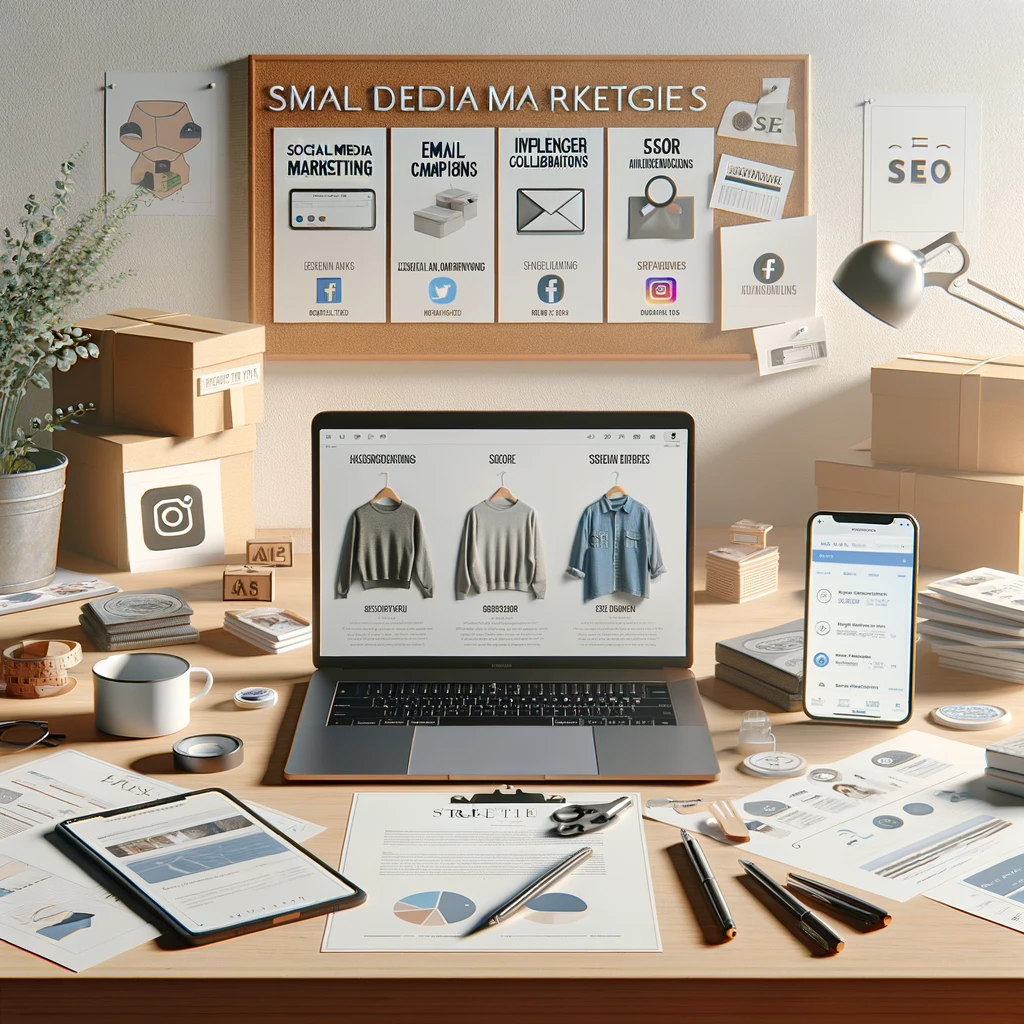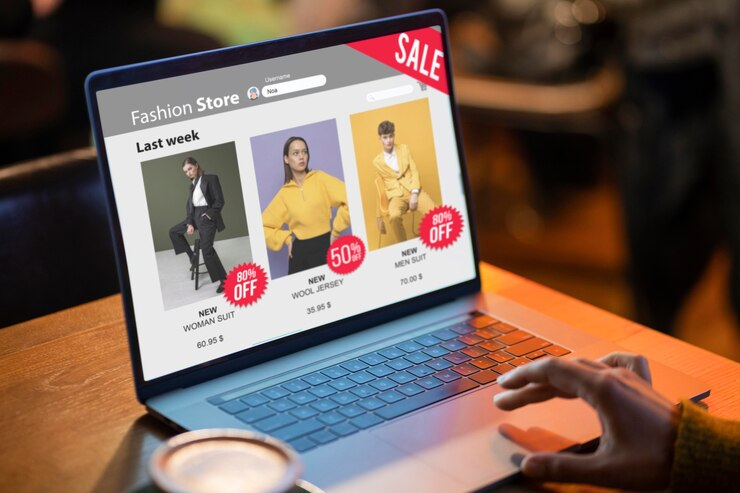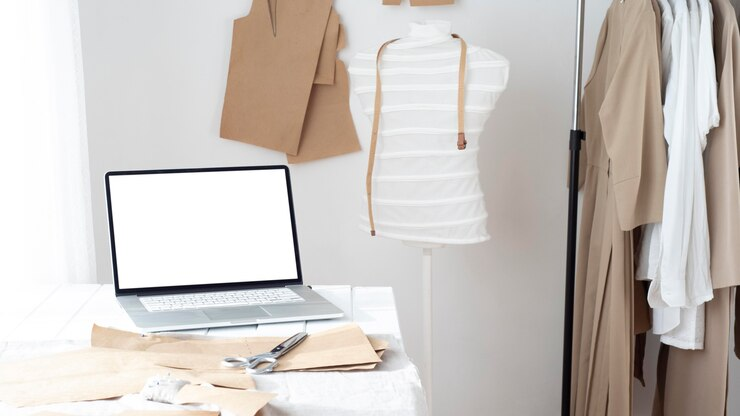If you are planning to start a clothing retail business in your own house, it is a great idea. If you want some helpful tips on how to transform a flair for fashion into a form of income, then kindly read on. Here is the checklist to help you consider and prepare all aspects and details to begin your successful online clothing store business from home.
1. Choose a clothing niche on your online clothing store

In business, you need to target a specific market before you begin your business; therefore, the first step toward undertaking a clothing business is choosing the market segment to target. This will assist you in identifying a specialized market for your business models, products and services to honour in order to avoid being overrun by competition to other clothing manufacturer. Consider the following questions:
- What do you wish to include in your clothing line? That is, what kind of clothes you want to produce? (e.g., clothing can be marketed as covering garments for various occasions (general day-to-day use, parties, business, sports, etc.)
- A society to which does the target audience belong? (e. g. , age, gender, lifestyle)
- How do you prefer your garments to stand out? (e. g. But by using only enough material to cover the project, installing built-in appliances, and offering custom designs at affordable prices, our company is.
2. Find your Target Audience

Declaring your target market is one of the most significant activities for starting a small clothing business from home. The first step involves identifying the characteristics and features of your product, including its style or model, quality, price, and the specific niche or benefit that it offers, known as the Unique Selling Proposition (USP).
Cross-reference surveys, focus group discussions, and competitor analysis to gain insight on the particular potential customers. Determine your target audience by understanding the markets of age, gender, geographical area, income, and habits. Learn their habits in order to recognize shopping paradigms, whether those are Web-based, boutique or sales via department stores.
Use social media, especially Instagram and Facebook, to communicate with clients so that more information on their interests can be obtained.
Last but not least, develop a step-by-step customer persona based on this data that will help you calibrate your marketing strategies perfectly so that the customer is able to find your product interesting as per his/her needs.
3. Create a Business Plan for your online clothing business
Every business requires a good business plan and what may take place in start a clothing line business online may not be understood until appropriate measures are taken. It should include into your clothing line business plan to your clothing business online:

Executive Summary
Business proposal and objectives are the two most basic requirements in any business proposal that every entrepreneur has to meet to have a better chance of being approved by the target audience.
Market Analysis
In addition, perform research on your market, your competition and other related industries as well.
Marketing Strategy
How you intend to access the markets with a view of creating awareness and the ultimate goal of selling your products.
Operations Plan
Description of the production database, work-in-progress inventory and shipping or distribution of finished products.
Financial Plan
Budget, price positioning, and potential revenue.
4. Marketing strategies

Effective Promotion Techniques to Use when Starting a Clothing Business from Home
Social Media Marketing
- Specifically, start accounts on Instagram, Facebook, and Pinterest.
- Consistency is important, so it is recommended to post frequently, and when doing so, try to post quality content that includes relevant images.
- Hashtags and follower interaction ought to be a major focus.
Email Marketing
- Promote your website or social media account in order to build an email list.
- Newsletter that can include updates, promotional offers, and new products or services for customers.
- Influencer Collaborations
- Influencer marketing should be used in order to expand the reach of the brand and its message.
- Treat individuals as brand ambassadors and offer free products or a discount in return for publicity.
Content Marketing
- Create a blog page section on your website.
- Having a blog posted on your website devoted to fashion trends and styling tips that you and your stylists use and work with would be a great idea.
Paid Advertising
- Advertising online – Buy space on popular websites and place advertisements (web banners) and contextual ads in their places. g. Promotion tools: There are several promotion tools that are commonly used in online markets, some of which are:- Facebook Ads, Google Ads).
- Physically identify the right people, so you can find your own customers.
Search Engine Optimization (SEO)
- To maximize the efficiency of the website and the description of products, it is necessary to include keywords that would correlate with the potential buyers’ search requests.
- Make sure that your website has good interface and also that it loads quickly.
Local Marketing plan
- Selling food stuffs directly to the communities by establishing stalls in local markets, fairs and pop-ups.
- Promote the products online through social media and other business contacts.
Referral Program
- Develop a formal system of compensation to incentivize individuals to recommend your brand/product to others.
- Some recommendations are given as follows: Special offers or incentives to the customer referring a friend.
Customer Reviews and Testimonials
- Make sure that if you want customers to write more reviews for your business on website and social media, you have to provide them with the feedback after serving them.
- Use testimonial features to get some levels of trust established.
Loyalty Program
- Minimize risks associated with the business through constructing a loyalty scheme for customers.
- This method involves giving out free coupons or tokens that are only valid in your store, or giving the first look at new products, or accompanying the product with gifts.
5. Source your Materials

Sourcing for materials is another key factor that should be addressed bearing in mind that relying on a good supplier is key to ensuring good stock is used in the production of the products. Some materials that you may buy include fabrics, trims, and others; it can be acquired from wholesalers clothing manufacturers, fabric markets, or online suppliers. Supplier relations are crucial as we seek to establish better prices and consistency of supply in our preferred supplies.
6. Budget and Financial Management

For an individual who wants to venture into the fashion business by starting a small clothing business at home, to be able to achieve this success it will require the following. An excellent place to start is to come up with an approximate figure on different expenses such as market research, registering your business, getting a website, and buying your first stock. Include imaging and setup costs for your workspace and overhead costs, supplies, and product components are considered variable expenses of the business. Pay for an accounting software to help keep track of the expenses by recording the figures in relavant books. Monitoring and updating your budget on a regular basis can help you to ensure that you keep on the right track in terms of your spending and savings. Budget cash for the advertisement and marketing campaign that includes web and social media advertising. Develop an emergency fund, and investigate if you have other resources that can be used to meet emergency costs such as savings, credit, or crowdfunding. There are several factors that can help you achieve a good financial plan when embarking on the home-based clothing business venture as follows.
7. Select your e-commerce platform

Choosing the right e-commerce platform is important for starting a boutique clothes selling business model at home, because the platform that you choose will be the primary foundation for your to start an online clothing store. Some of these options include websites such as Shopify, WooCommerce, or Etsy because they present different features for businesses to your clothing items in your fashion industry.
One of the main benefits of Shopify is that all aspects of creating and selling products and services are in one place – designing with templates, payments, and marketing are all built-in for easy usability, which is great for first-timers. While WooCommerce is built on top of WordPress and has its own templates, it is a plugin so it provides more flexibility and more control if you are comfortable with WordPress and web development; additionally, WooCommerce is part of the broader WordPress ecosystem of plugins.
Ideally, one should choose a shop that caters to handmade or otherwise really niche clothing company; Etsy is perfect for this because the people interested in those items are already likely to be customers, and setting up a shop is simple. The criteria upon which one should evaluate each of the platforms include the flexibility, usage capabilities, price and ‘fit for purpose’, particularly in relation to growth strategies into your own online clothing store.
8. Design your collection of your clothing brand

Your clothing designs are the essence of what your company fashion brand is all about, and that can mean a significant amount of risk. If you are the one ordering clothes or creating clothes yourself with the help of a designer, make sure that the wear you are planning for your brand and the clothes you are going to produce or create is appropriate in capturing the interest of your niche market.
Design on paper or use design software then create dummy product prototypes from your designs and check on your friends or potential buyers for their views on your designs.
9. Set Up Your Workspace

Having organizational space in the home environment is crucial in order to avoid distractions and achieve high results when working. Consider the following:
1. Equipment: Such equipment as sewing machines, cutting tables, models, and other seemingly insignificant tools that are necessary for production.
2. Storage: Storage racks, bins set and shelves to put your items and manufactured goods to ensure orderliness.
Workspace Layout: Organize your operating zone according to the placement of items that you frequently handle on your working process.
10. Build Your Brand identity

Brand image is the key to success as a business name it gives your business a differentiation factor from the competitors and eventually gains customers. Develop a strong brand by:
Creating a Logo: Discovered that to leave a memorable message about the product, it is necessary to develop a memorable logo that reflects the personality of the brand.
Developing a Brand Story: Briefly explain the main idea and your experience that led you to create clothing brand.
Designing Packaging: Design an enticing box that will bring the design closer to customers.
11. Set Up an Online Store

It is also important that a client be online to reach as many people as possible. Select one of the e-commerce applications (e–access, e-business, e-commerce, e-marketing, e-procurement etc) g. The following are the common web platforms that you can use to build up your online business or store (for instance, Shopify, Etsy and WooCommerce).
Mention the importance of making it easy to navigate with clear layout, good design, and strongest emphasis on Search Engine Optimization. Make sure your photos look professional and you provide detailed descriptions of the products you are selling.
12. Manage Your Finances

Managing the money flows is sage for increasing revenues and profits in business ventures. Must always make the use of accounting software for the management of this aspect of the organization by tracking all the expenses, sales, as well as profits made within the organization. Also while developing the budget for the project ensure that an amount equal to taxes is set aside and that a qualified accountant be hired to advise on the financial part of the project.
15. Grow Your Business

As the clients and working project develop, people may start introducing new products to their own fashion line, need new employees, or even a new space to start working. Some of the recommendations that can be given here include:
The main recommendation is that the business should continuously engage with the customer to ensure that they are always getting their feedback on the newly introduced products so that the business will be aware of the new trends that are in the market into your own clothing brand.
Conclusion
It is a process that needs immense planning, lots of ideas, as well as dedication if a person wants to set up a small home base cloth selling business. After reading this article, you can easily follow these necessary steps to start a convenient online clothing boutique business. Endeavour not to get distracted, do not be in a hurry and last but not least, always bear in mind that every great business begins with the first. #team531112 Doing business is such a thrilling journey; may you find good luck on the way!
